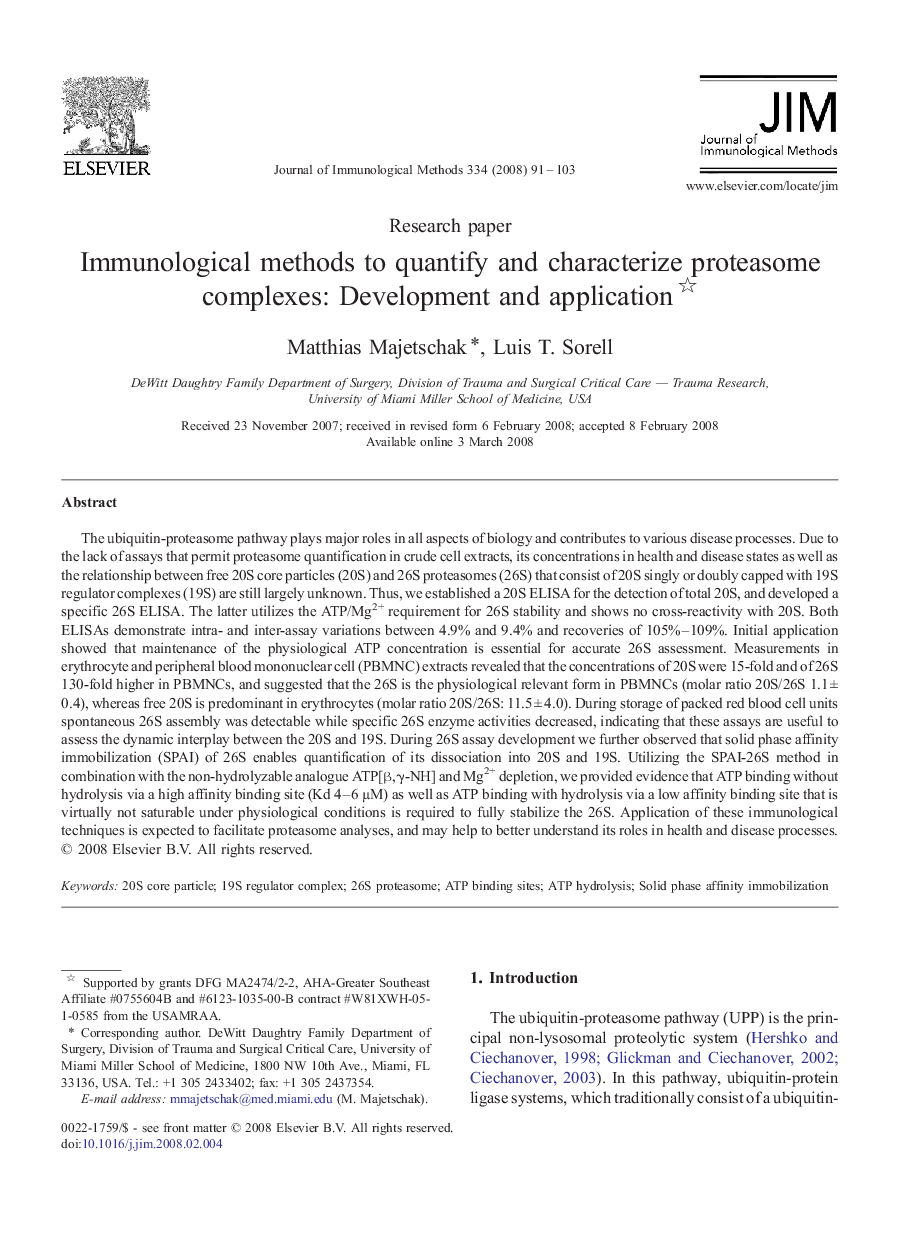| Article ID | Journal | Published Year | Pages | File Type |
|---|---|---|---|---|
| 2088913 | Journal of Immunological Methods | 2008 | 13 Pages |
Abstract
The ubiquitin-proteasome pathway plays major roles in all aspects of biology and contributes to various disease processes. Due to the lack of assays that permit proteasome quantification in crude cell extracts, its concentrations in health and disease states as well as the relationship between free 20S core particles (20S) and 26S proteasomes (26S) that consist of 20S singly or doubly capped with 19S regulator complexes (19S) are still largely unknown. Thus, we established a 20S ELISA for the detection of total 20S, and developed a specific 26S ELISA. The latter utilizes the ATP/Mg2+ requirement for 26S stability and shows no cross-reactivity with 20S. Both ELISAs demonstrate intra- and inter-assay variations between 4.9% and 9.4% and recoveries of 105%-109%. Initial application showed that maintenance of the physiological ATP concentration is essential for accurate 26S assessment. Measurements in erythrocyte and peripheral blood mononuclear cell (PBMNC) extracts revealed that the concentrations of 20S were 15-fold and of 26S 130-fold higher in PBMNCs, and suggested that the 26S is the physiological relevant form in PBMNCs (molar ratio 20S/26S 1.1 ± 0.4), whereas free 20S is predominant in erythrocytes (molar ratio 20S/26S: 11.5 ± 4.0). During storage of packed red blood cell units spontaneous 26S assembly was detectable while specific 26S enzyme activities decreased, indicating that these assays are useful to assess the dynamic interplay between the 20S and 19S. During 26S assay development we further observed that solid phase affinity immobilization (SPAI) of 26S enables quantification of its dissociation into 20S and 19S. Utilizing the SPAI-26S method in combination with the non-hydrolyzable analogue ATP[β,γ-NH] and Mg2+ depletion, we provided evidence that ATP binding without hydrolysis via a high affinity binding site (Kd 4-6 µM) as well as ATP binding with hydrolysis via a low affinity binding site that is virtually not saturable under physiological conditions is required to fully stabilize the 26S. Application of these immunological techniques is expected to facilitate proteasome analyses, and may help to better understand its roles in health and disease processes.
Keywords
Related Topics
Life Sciences
Biochemistry, Genetics and Molecular Biology
Biotechnology
Authors
Matthias Majetschak, Luis T. Sorell,
